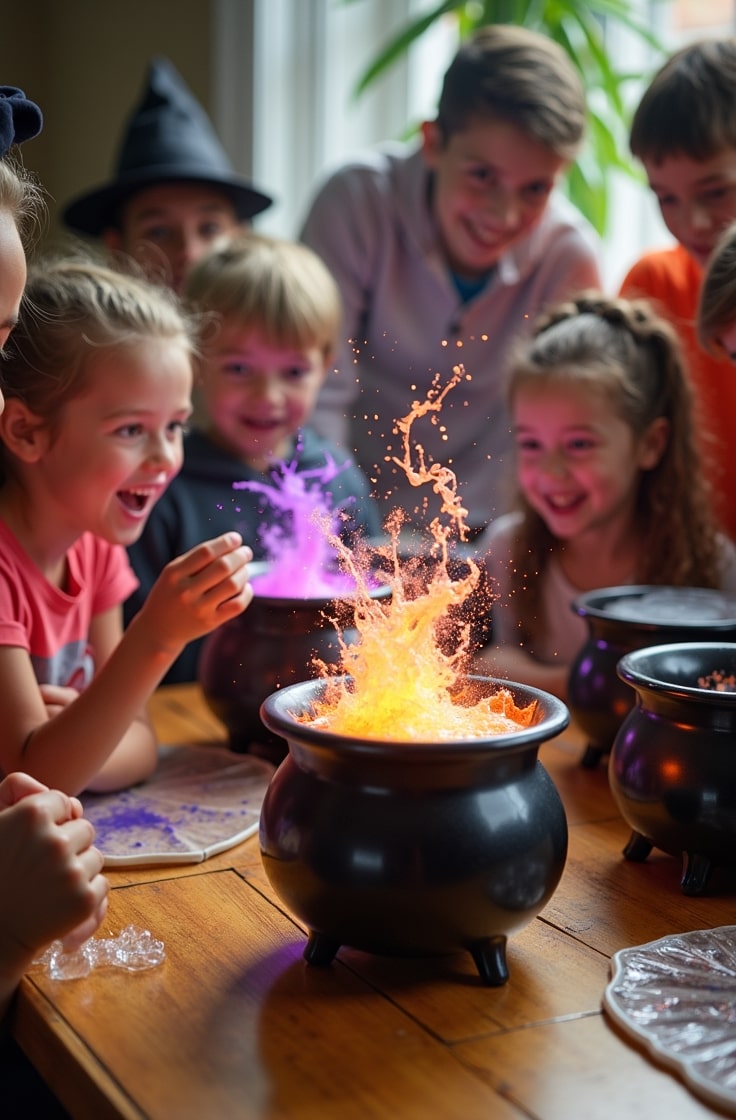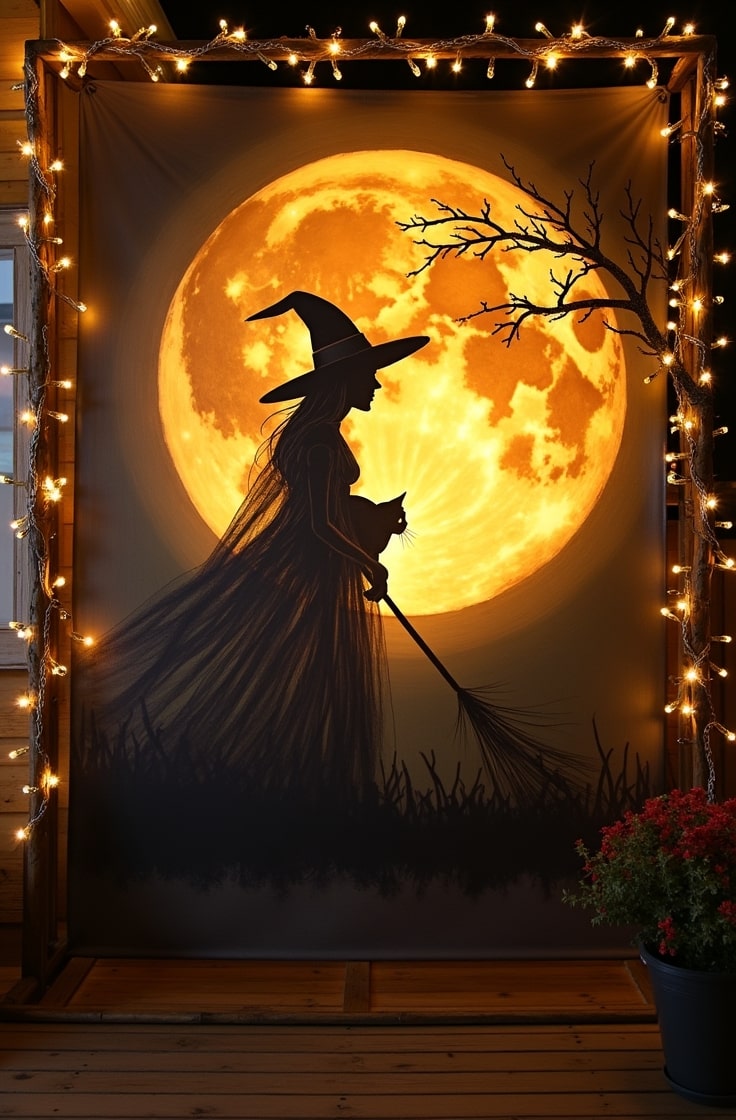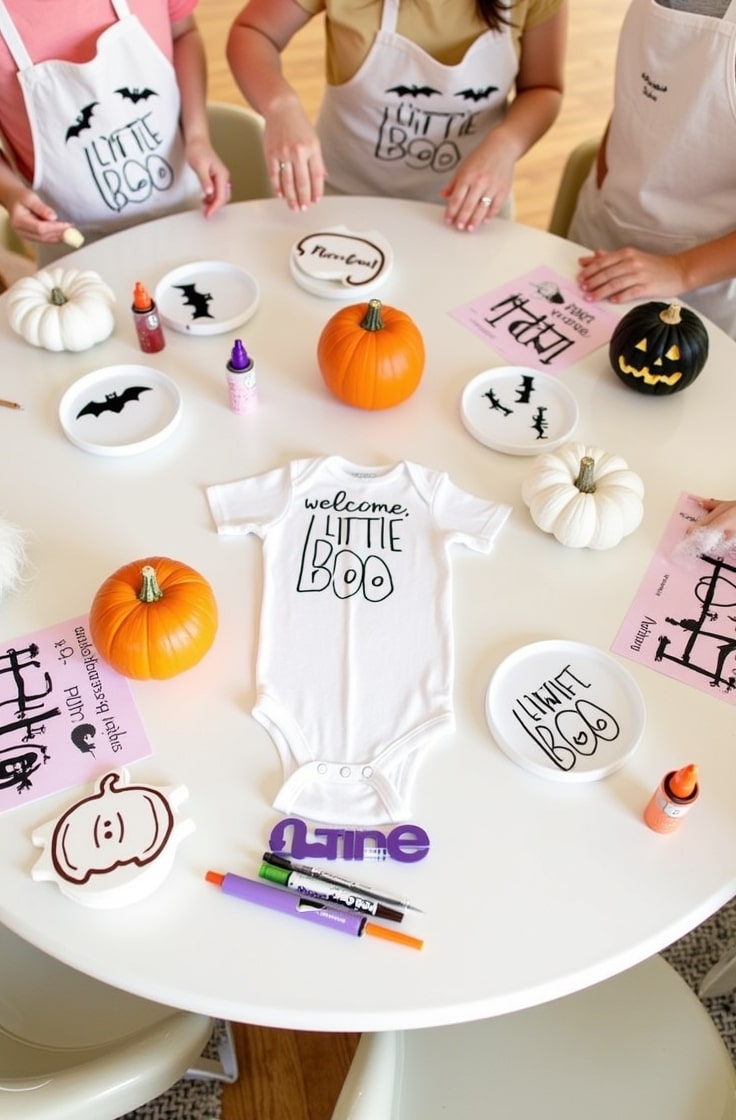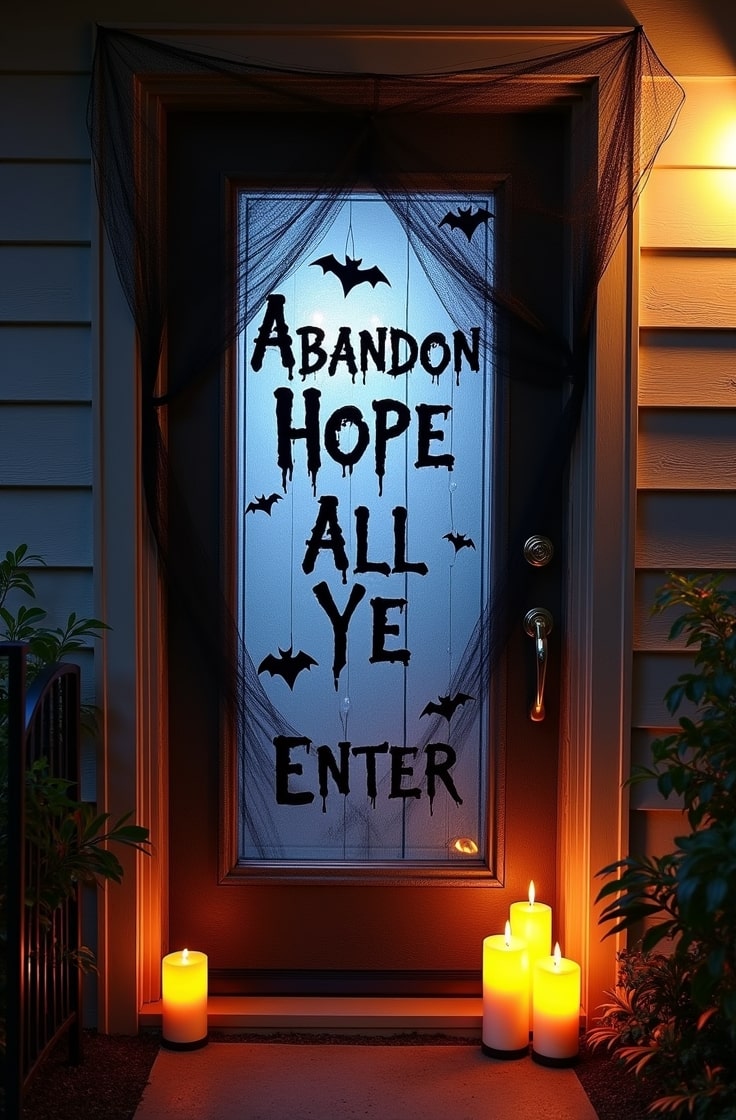13 Exciting Halloween Classroom Activities for Kids
Halloween is just around the corner, and I know you’re looking for fun, engaging ways to bring the spooky season into your classroom.
I’m excited to share 13 Halloween-themed activities that will spark creativity, encourage learning, and keep your students smiling.
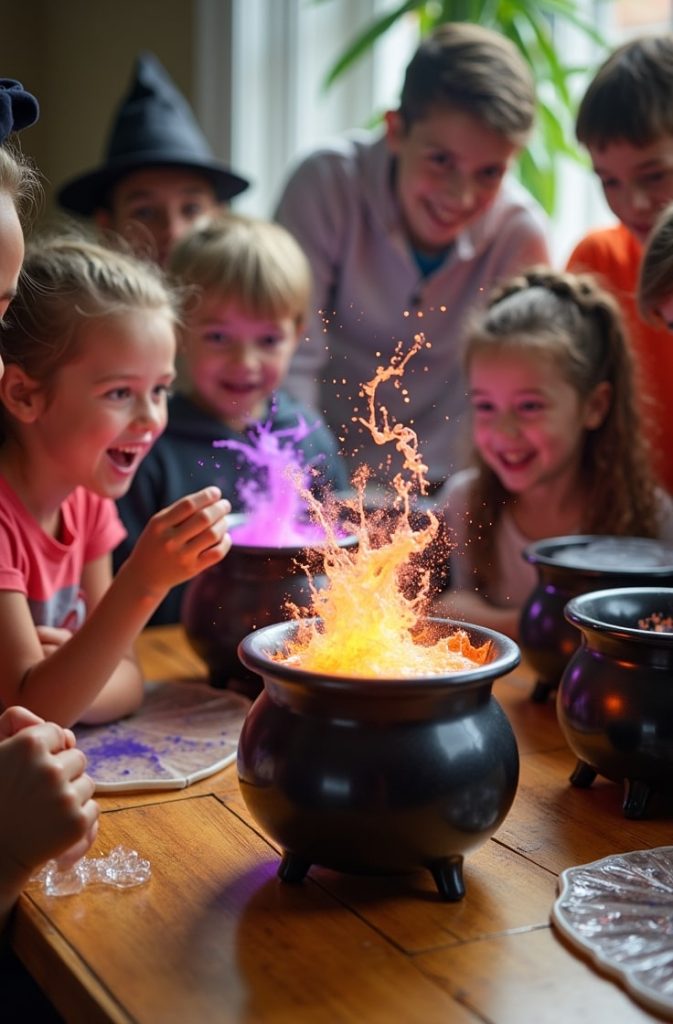
These activities are designed for elementary and middle school students, ages 5 to 13. They’re easy to set up, use affordable materials, and work for different class sizes.
Whether you’re teaching in person or online, I’ve got you covered with ideas that are inclusive, safe, and packed with educational value. Let’s dive in!
Types of Activities
To make sure there’s something for everyone, I’ve grouped the activities into five categories:
- Creative Arts and Crafts: These let students express themselves through art while practicing fine motor skills.
- Literacy and Storytelling: These build reading, writing, and speaking skills with a Halloween twist.
- STEM Activities: These bring science, technology, engineering, and math into the spooky season.
- Games and Movement: These get students moving and working together.
- Social-Emotional Learning (SEL): These help students practice collaboration, empathy, and self-expression.
Each activity is designed to be fun, educational, and easy to adapt. Ready to explore? Here are the 13 Halloween classroom activities!
13 Halloween Classroom Activities
1. Pumpkin Paper Plate Craft (Creative Arts)
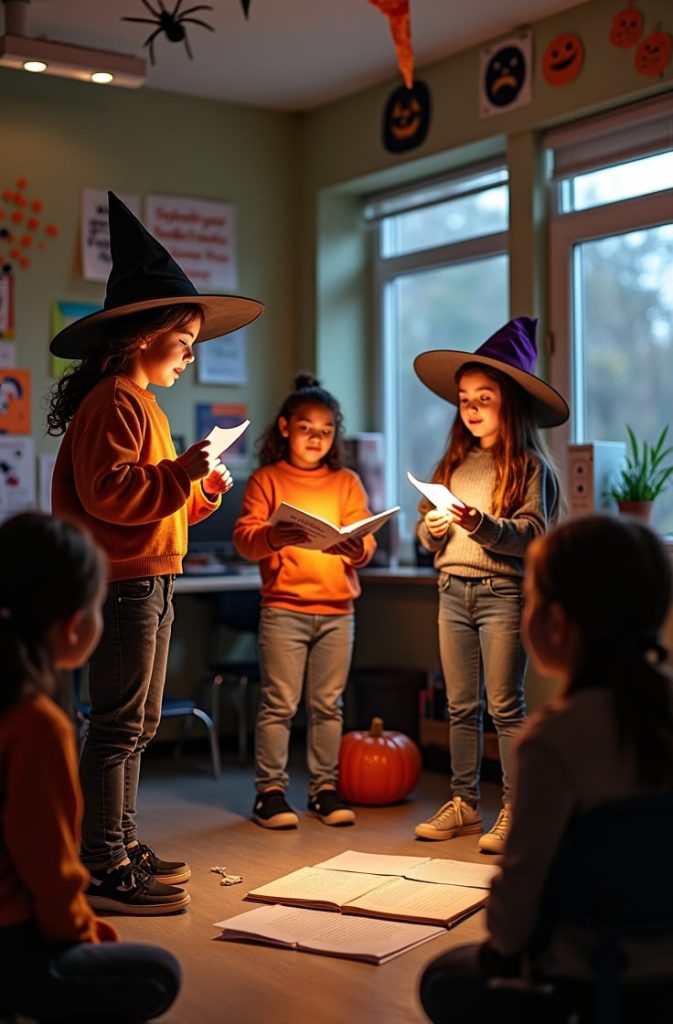
Let’s start with a classic craft: making pumpkins out of paper plates. This activity is perfect for sparking creativity and practicing fine motor skills. Your students will love creating their own decorative pumpkins to display in the classroom.
What You’ll Need: Paper plates, orange paint, green construction paper, glue, and markers.
How to Do It: Give each student a paper plate. Have them paint it orange and let it dry. While they wait, they can cut out a green stem from construction paper. Once the plate is dry, they glue the stem on top and use markers to draw a face or pattern. Encourage them to get creative—maybe it’s a silly jack-o’-lantern or a fancy patterned pumpkin!
Why It Works: This craft helps students practice painting, cutting, and gluing. It also lets them express their unique style. Following the steps teaches them to listen and follow instructions.
Adaptations: For younger students, pre-cut the stems to make it easier. If you’re short on supplies, use recycled materials like old cardboard for stems. You can also have students work in pairs to share materials.
2. Spooky Story Writing Prompt (Literacy)
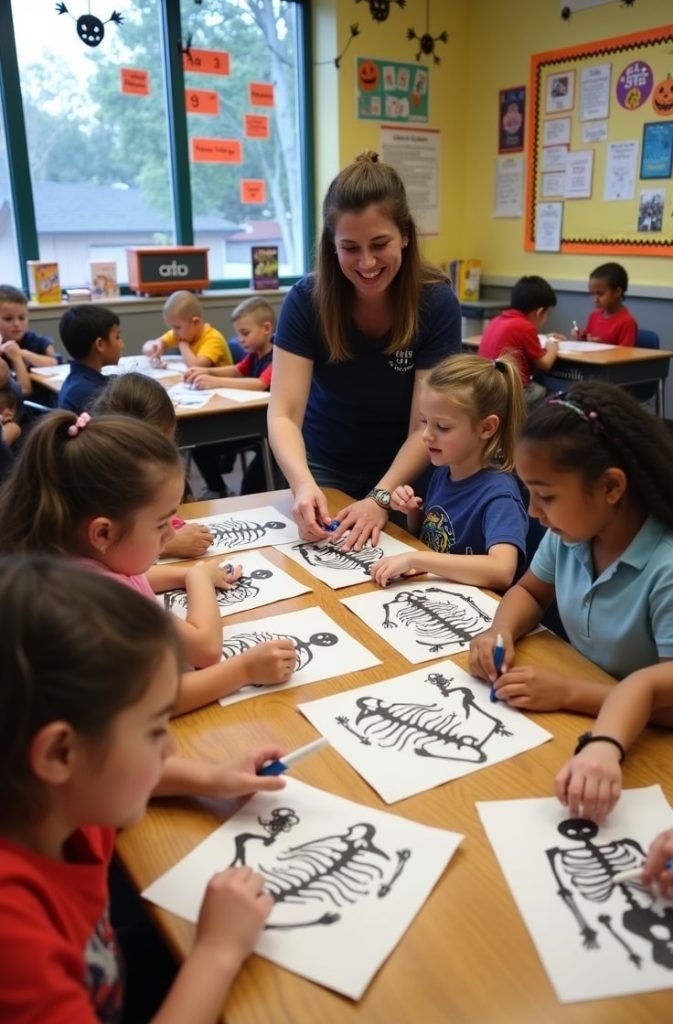
Writing a Halloween-themed story is a great way to boost your students’ writing and speaking skills. This activity encourages them to use their imagination while practicing narrative structure.
What You’ll Need: Writing paper, pencils, and Halloween-themed prompts (like “The friendly ghost in the classroom” or “The day the pumpkin came to life”).
How to Do It: Start by sharing a few prompts to inspire your students. Let them brainstorm ideas for a few minutes. Then, give them time to write a short story—about one or two paragraphs is perfect. Once they’re done, invite volunteers to share their stories with the class. You can even dim the lights for a cozy storytelling vibe!
Why It Works: This activity builds creative writing skills and helps students organize their thoughts into a beginning, middle, and end. Sharing their stories boosts confidence in public speaking.
Adaptations: For younger students or those who need extra help, provide a graphic organizer with sections for characters, setting, and plot. Pair students up to write a story together if they’re shy about writing alone. For advanced students, challenge them to include specific vocabulary words.
3. Witch’s Brew Science Experiment (STEM)
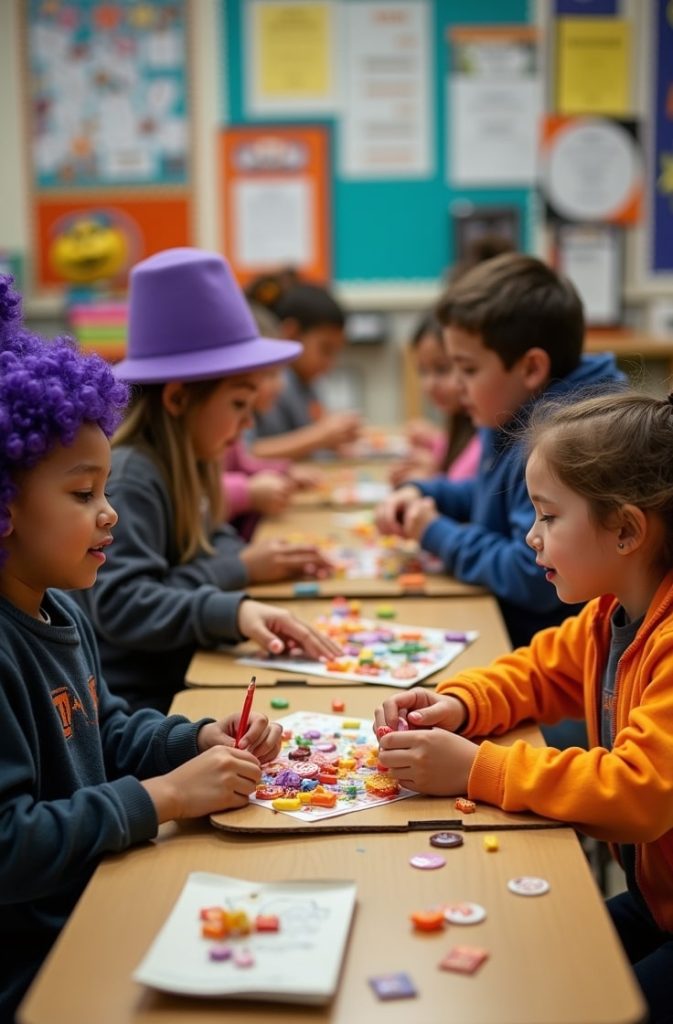
Who doesn’t love a fizzing, bubbling potion? This science experiment brings Halloween magic into the classroom while teaching students about chemical reactions.
What You’ll Need: Baking soda, vinegar, food coloring, cups, and cauldron-shaped containers (plastic bowls work fine).
How to Do It: Set up a “potion station” for each group of students. Put a spoonful of baking soda in each cauldron. Add a few drops of food coloring for a spooky effect. Then, let students pour in vinegar and watch the potion fizz! Afterward, talk about why the reaction happened (the baking soda and vinegar create carbon dioxide gas).
Why It Works: Students practice observing and asking questions, key skills in science. They also get to test a hypothesis (e.g., “What happens if we add more vinegar?”).
Adaptations: For younger students, keep it simple by pre-measuring ingredients. For older students, add a math twist by having them measure exact amounts of baking soda and vinegar. You can also experiment with different colors to make it more fun.
4. Monster Mash Freeze Dance (Games and Movement)
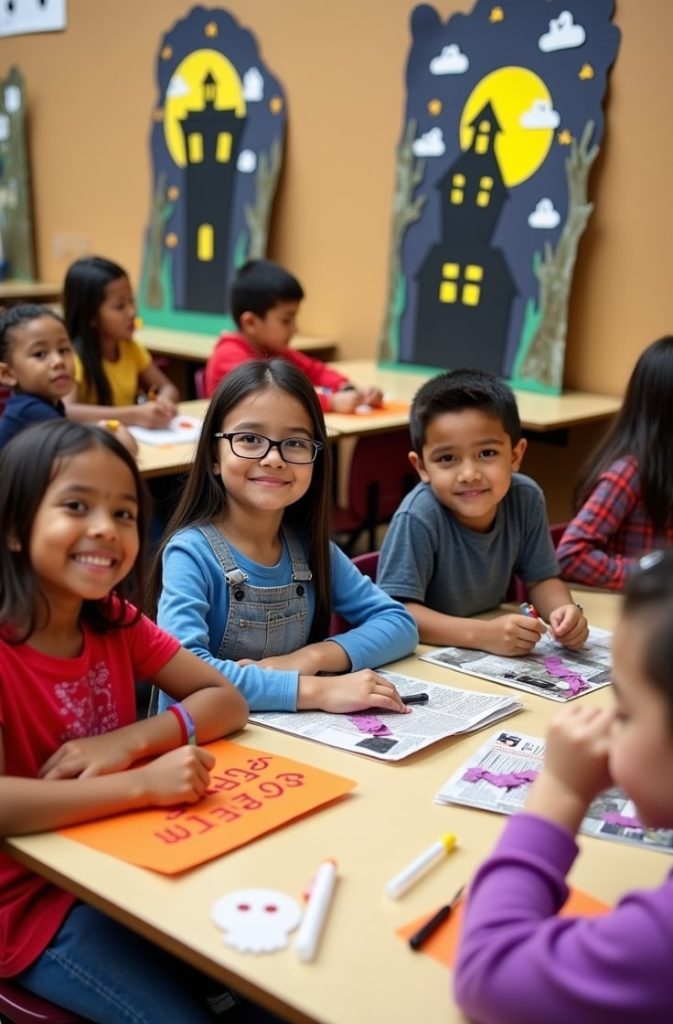
Get your students moving with a Halloween-themed dance party! This game is perfect for burning energy and building teamwork.
What You’ll Need: A Halloween music playlist (think “Monster Mash” or “Thriller”) and a speaker.
How to Do It: Clear some space in the classroom. Play the music and let students dance like monsters—think wobbly zombie arms or bouncy Frankenstein steps. When you pause the music, they freeze in place. Anyone who moves is out for that round (or just keep it fun with no eliminations). Play a few rounds to keep the energy high.
Why It Works: This game improves coordination and listening skills. It also encourages students to work together and have fun as a group.
Adaptations: Add costume elements like paper masks to make it more festive. For younger students, slow down the music to make freezing easier. You can also vary the tempo to challenge older students.
5. Halloween Word Search (Literacy)
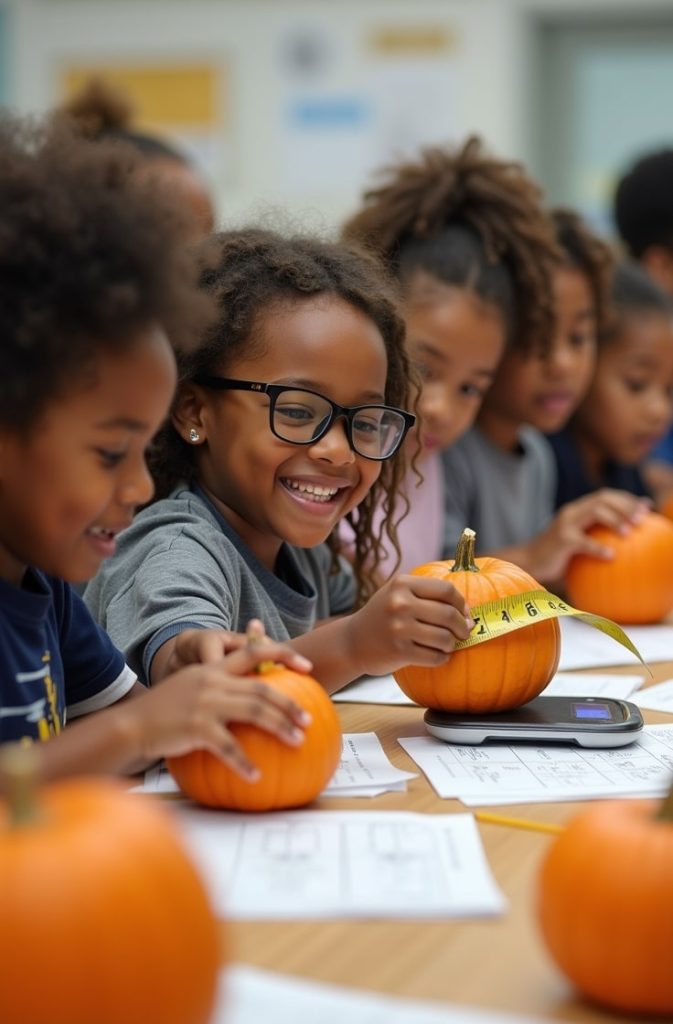
A word search is a simple, engaging way to build vocabulary and focus. This Halloween-themed version keeps students entertained while learning.
What You’ll Need: Printed word search sheets with Halloween words like “pumpkin,” “ghost,” “candy,” or “witch,” plus pencils.
How to Do It: Hand out the word search sheets. Let students find the hidden words. You can set a timer for a friendly challenge or let them work at their own pace. When they’re done, go over the words together to reinforce spelling and meaning.
Why It Works: This activity strengthens vocabulary and spelling. It also helps students stay focused and practice attention to detail.
Adaptations: Create different versions for various reading levels—shorter words for younger students, longer ones for older ones. You can find free printable Halloween word searches online or make your own with a word search generator.
6. Spider Web Math Challenge (STEM)
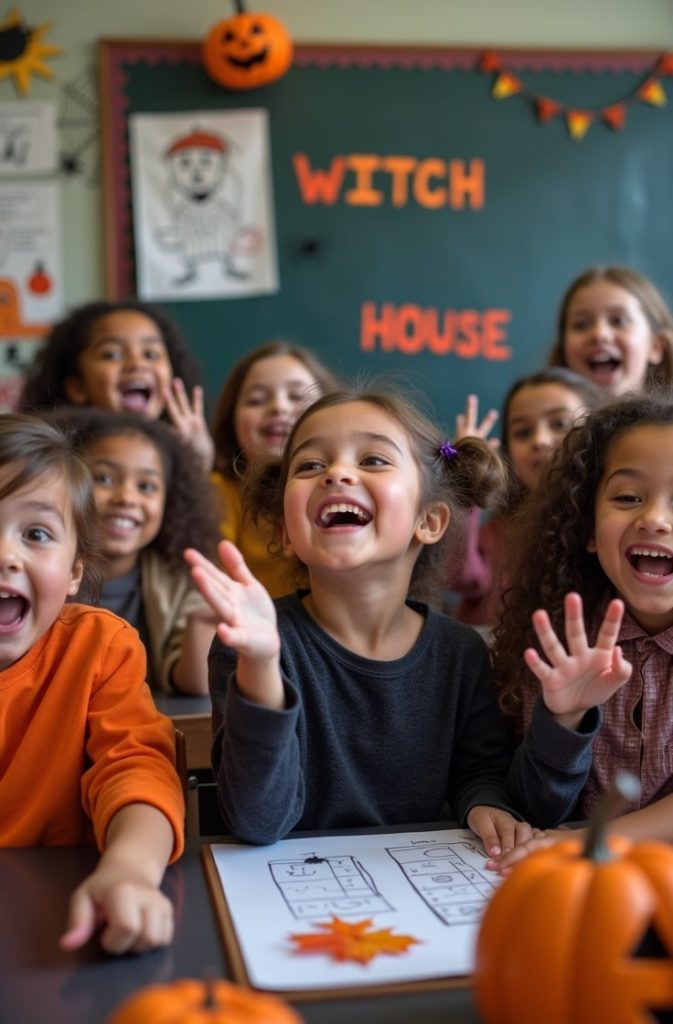
Turn math into a fun, hands-on activity with this spider web challenge. Students solve problems to build a giant web in the classroom.
What You’ll Need: Yarn, tape, and math problem cards (e.g., addition for younger students, multiplication for older ones).
How to Do It: Divide students into small groups. Give each group a set of math problem cards. For each correct answer, they get a piece of yarn to tape across desks, creating a “spider web.” The group with the most yarn connections wins (or just focus on the fun of building the web).
Why It Works: This activity combines math practice with teamwork. Solving problems to earn yarn keeps students motivated.
Adaptations: Adjust the math problems to match your students’ skill levels. For younger students, use simple addition or subtraction. For older students, try fractions or decimals. If space is tight, have students draw their webs on paper instead.
7. Ghostly Lanterns (Creative Arts)
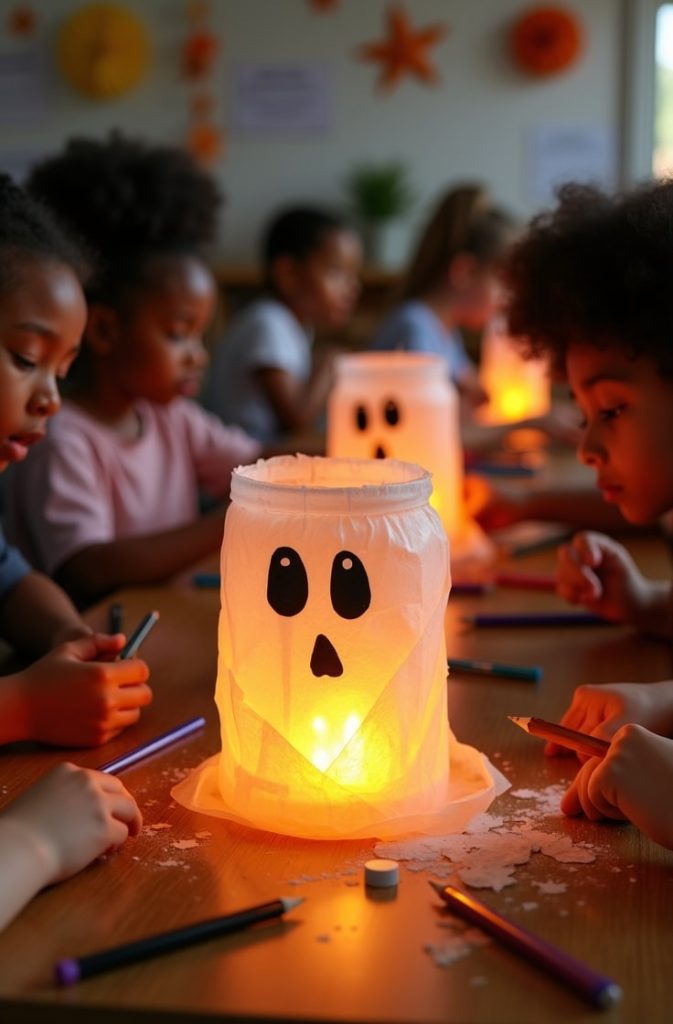
These glowing lanterns are a beautiful way to light up your classroom with Halloween spirit. They’re simple to make and look amazing.
What You’ll Need: Glass jars or paper bags, tissue paper, LED candles, glue, and markers.
How to Do It: Give each student a jar or paper bag. Have them cut out ghost faces from white tissue paper and glue them on. They can use markers to add details like eyes or mouths. Place an LED candle inside to make it glow. Display the lanterns around the classroom for a spooky effect.
Why It Works: This craft encourages creativity and fine motor skills. It also teaches students about safe lighting options (LED candles instead of real ones).
Adaptations: Use paper bags if jars aren’t available. For younger students, pre-cut the tissue paper. If you want to save time, let students decorate with stickers instead of cutting.
8. Halloween Charades (Games and Movement)
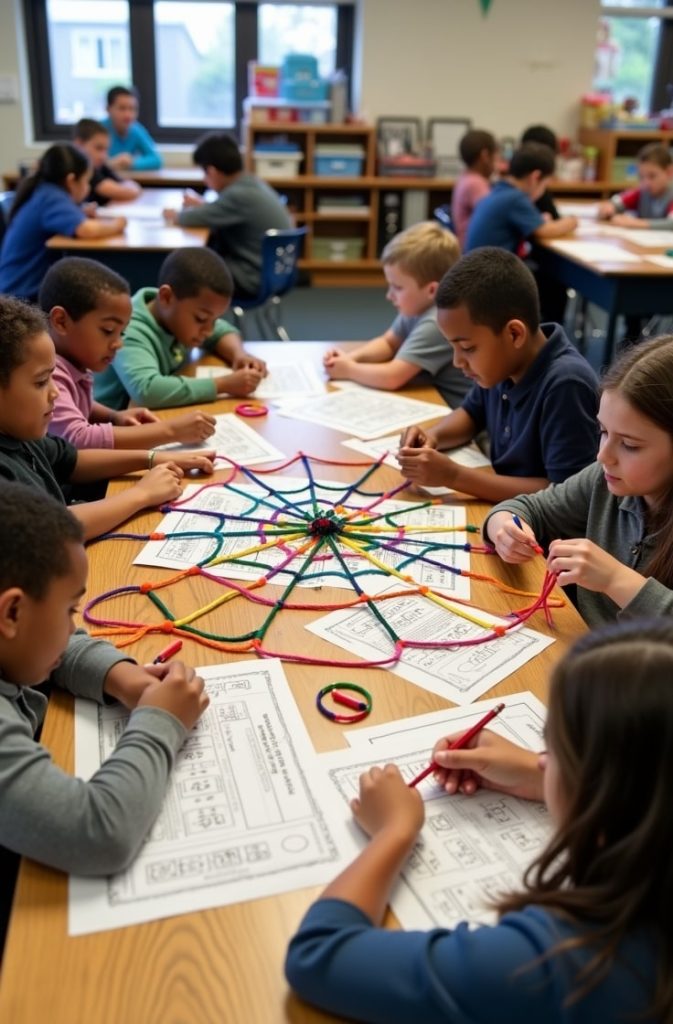
Charades is a classic game that’s perfect for Halloween. It gets students thinking fast and working together.
What You’ll Need: Cards with Halloween-themed words or phrases like “witch,” “bat,” “haunted house,” or “trick-or-treat.”
How to Do It: Divide the class into two teams. One student from a team picks a card and acts out the word without speaking. Their team guesses within a time limit (like 30 seconds). Each correct guess earns a point. Keep going until everyone has a turn.
Why It Works: This game builds communication and quick-thinking skills. It’s also a great way to encourage teamwork.
Adaptations: For younger students, use pictures on the cards instead of words. For older students, add phrases like “carving a pumpkin” to make it harder. You can also play in small groups to give everyone more turns.
9. Pumpkin Estimation Game (STEM)
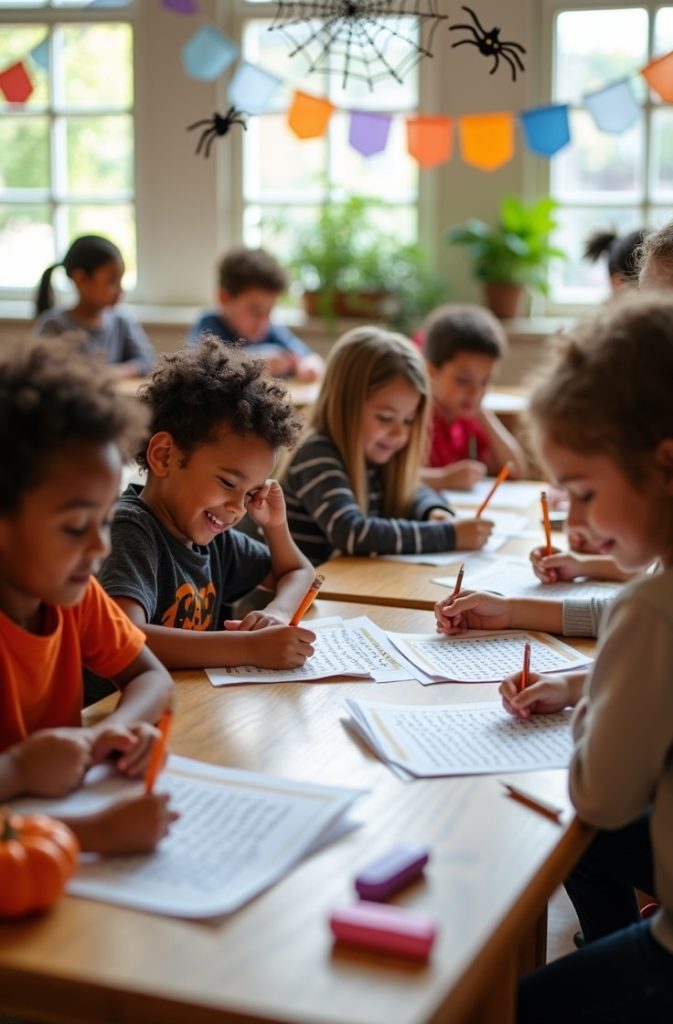
Estimation is a key math skill, and this activity makes it fun with real pumpkins. Students get to guess and measure, combining math with hands-on learning.
What You’ll Need: Small pumpkins, measuring tools (like a scale or tape measure), and estimation worksheets.
How to Do It: Show students a pumpkin and ask them to estimate its weight, circumference, or number of seeds. Have them write their guesses on the worksheet. Then, measure the pumpkin together to see who was closest. If you’re feeling adventurous, cut open the pumpkin to count the seeds!
Why It Works: This activity teaches estimation and measurement. It also introduces data collection as students compare their guesses to the actual numbers.
Adaptations: Use plastic pumpkins for younger students or if you don’t want a mess. For older students, add more measurements, like height or volume. You can also turn it into a class competition.
10. Haunted House Collage (Creative Arts)
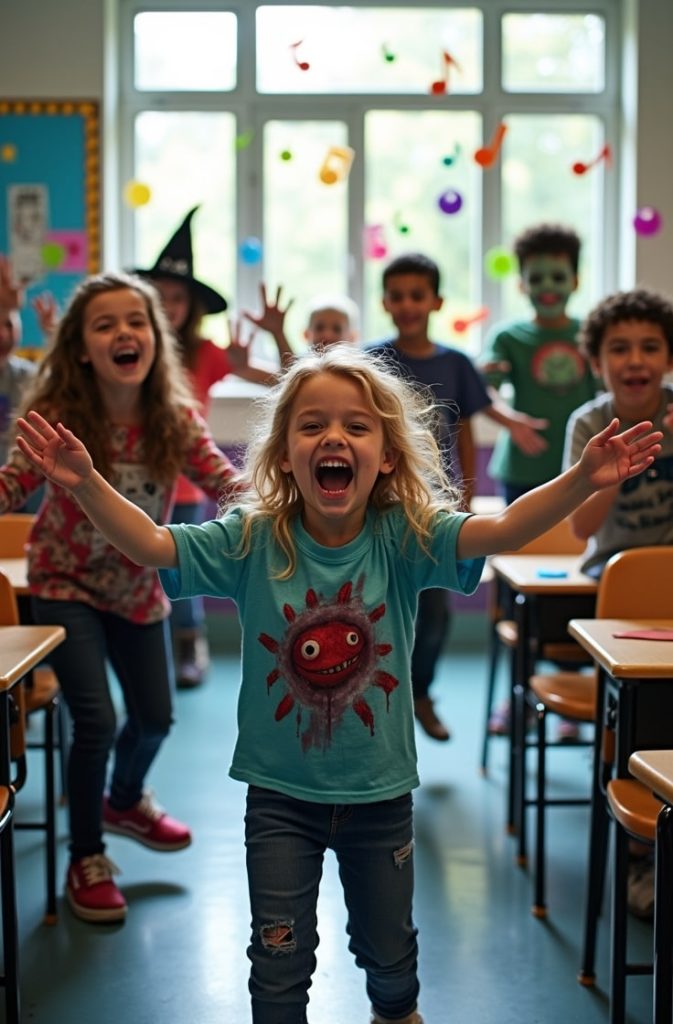
This collage activity lets students create their own spooky scene. It’s a great way to encourage creativity and practice cutting and gluing.
What You’ll Need: Construction paper, old magazines, scissors, and glue.
How to Do It: Give students a piece of construction paper as their base. Have them cut out shapes or images from magazines to build a haunted house scene—think bats, moons, or creepy trees. They glue everything together to create a unique collage. Display the finished pieces on a bulletin board.
Why It Works: This activity boosts artistic expression and spatial reasoning. Students plan how to arrange their pieces to tell a visual story.
Adaptations: Provide templates of house shapes for younger students. For older students, challenge them to include specific elements, like a certain number of windows or characters.
11. Trick-or-Treat Role Play (SEL)
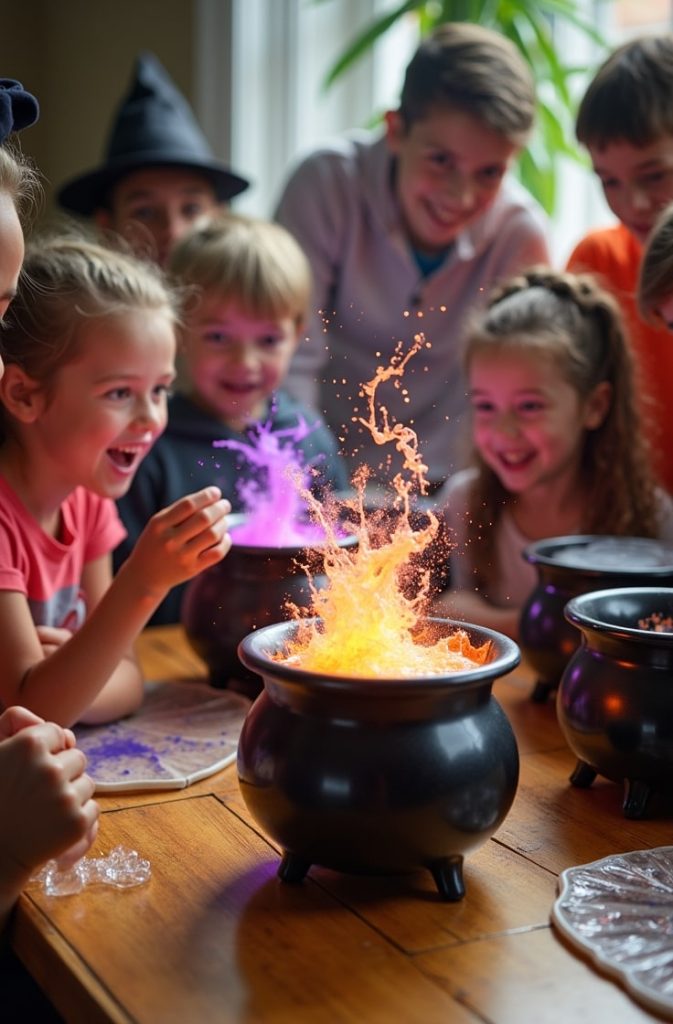
This role-play activity helps students practice social skills in a fun, Halloween-themed way. It’s perfect for teaching politeness and empathy.
What You’ll Need: Props like bags, fake candy, and simple costume pieces (like hats or capes).
How to Do It: Set up a “neighborhood” in the classroom with desks as houses. Students take turns being trick-or-treaters or homeowners. Trick-or-treaters practice saying “Trick or treat!” and “Thank you!” while homeowners hand out fake candy. Switch roles so everyone gets a turn.
Why It Works: This activity teaches social skills like polite communication and taking turns. It also builds empathy as students see both perspectives.
Adaptations: Add scenarios where students solve small conflicts, like what to do if someone forgets to say “thank you.” For younger students, keep it simple with fewer props.
12. Skeleton Anatomy Puzzle (STEM)
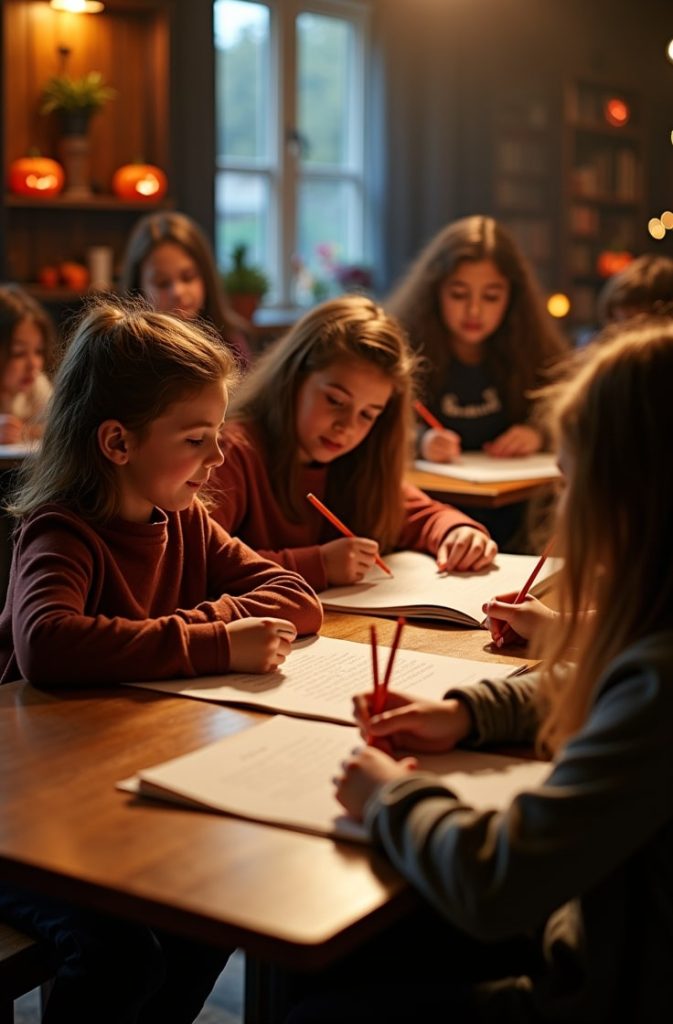
This activity combines Halloween fun with basic anatomy. Students build a skeleton puzzle and learn about bones.
What You’ll Need: Printed skeleton templates, scissors, and tape.
How to Do It: Give each student or group a skeleton template (you can find free ones online). They cut out the pieces and tape them together to form a skeleton. Once it’s assembled, have them label major bones like the skull, spine, or femur. Hang the skeletons around the room for a spooky display.
Why It Works: This activity teaches basic anatomy while practicing problem-solving and fine motor skills. It’s a hands-on way to learn science.
Adaptations: Use larger pieces for younger students to make cutting easier. For older students, include more bones or ask them to research bone functions.
13. Halloween Poetry Slam (Literacy)
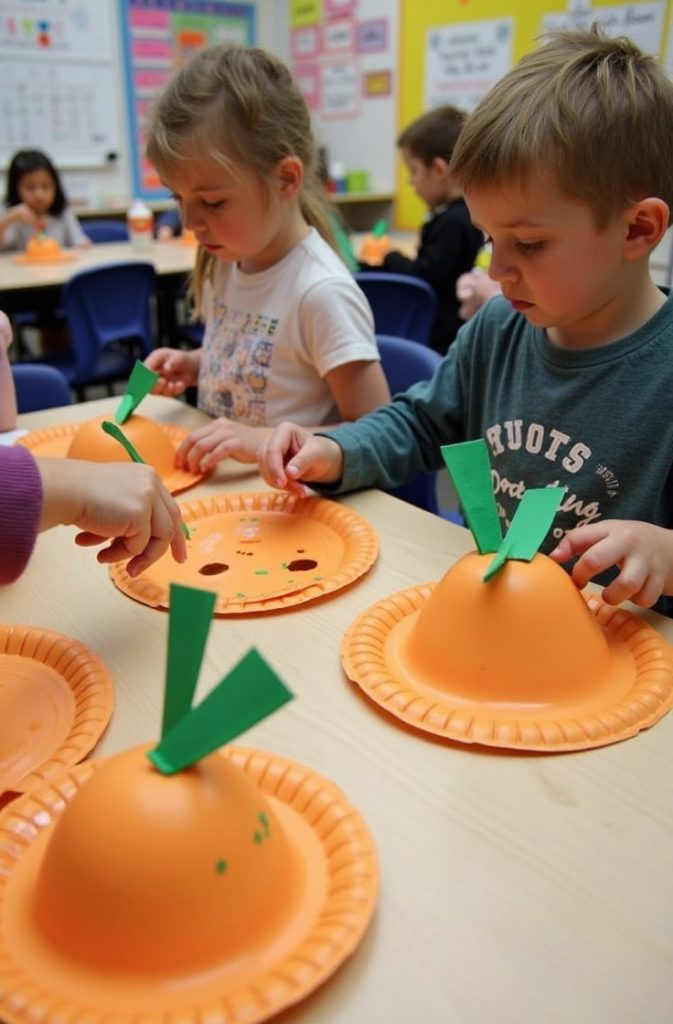
End with a bang by hosting a Halloween poetry slam! This activity lets students write and perform their own poems.
What You’ll Need: Paper, pencils, and optional props for performances (like a witch hat or flashlight).
How to Do It: Have students write a Halloween-themed poem. An acrostic poem using the word “SPOOKY” is a great starting point—each line starts with a letter from the word. Give them time to draft and revise. Then, hold a poetry slam where they perform their poems for the class. Encourage dramatic readings!
Why It Works: This activity builds poetry skills and confidence in public speaking. It also lets students express their creativity.
Adaptations: For shy students, let them write group poems or read in pairs. For advanced students, challenge them to use rhyme or specific poetic devices like alliteration.
How to Make These Activities Work in Your Classroom
Now that you have 13 awesome activities, let’s talk about how to pull them off smoothly.
Preparation: Plan ahead to make sure you have enough time and space. Gather materials early—most of these use items you already have, like paper or yarn. If you’re on a tight budget, check your recycling bin for things like cardboard or jars.
Classroom Management: Set clear rules before starting, especially for group activities. For example, remind students to take turns or use scissors safely. If you have a large class, try setting up stations where small groups rotate through different activities.
Inclusivity: Make sure every student feels included. Avoid themes that might be too scary for some kids. Offer modifications for students with special needs, like larger materials for motor challenges or quieter spaces for sensory sensitivities.
Safety: Always double-check that materials are safe and non-toxic. Supervise closely when students use scissors or small objects. For activities like the ghostly lanterns, stick to LED candles to avoid fire risks.
Connecting to Educational Standards
These activities aren’t just fun—they align with educational standards. The literacy activities, like the spooky story and poetry slam, support Common Core English Language Arts standards for writing and speaking.
The STEM activities, like the witch’s brew and pumpkin estimation, tie into Next Generation Science Standards (NGSS) for scientific inquiry and math standards for measurement.
The arts and crafts build fine motor skills, while the games and SEL activities promote collaboration and communication.
To make these activities work for all your students, offer scaffolding for those who need extra help. For example, provide story templates or simpler math problems.
For advanced students, add challenges like writing longer stories or solving harder math problems. This way, everyone stays engaged.
Taking It Further: Extensions and Variations
Want to make your Halloween classroom even more special? Try these ideas:
- Halloween Day: Combine a few activities into a full “Halloween Day.” Start with a craft, move to a game, and end with storytelling. It’s a great way to keep the energy high.
- Haunted Museum: Display all the crafts—like pumpkins, lanterns, and collages—in a classroom “haunted museum.” Invite other classes to visit!
- Cross-Grade Collaboration: Pair older students with younger ones for activities like the trick-or-treat role play. It’s a fun way to build community.
- Virtual Adaptations: If you’re teaching online, adapt activities like the word search (use digital versions) or storytelling (share via video). You can even do the poetry slam on a video call.
Why These Activities Meet Your Needs
I designed these activities to check all the boxes for what you, as a teacher, want in a Halloween classroom plan:
- Variety: There’s something for every learner—art, writing, science, movement, and social skills.
- Practicality: The materials are affordable and easy to find. The instructions are clear and simple to follow.
- Educational Value: Each activity ties to skills like creativity, problem-solving, or teamwork. They also align with standards to support your curriculum.
- Inclusivity: The activities are age-appropriate and avoid themes that might exclude anyone.
- Fun Factor: The Halloween theme keeps students excited while staying focused on learning.
Wrapping It Up
There you have it—13 Halloween classroom activities to make your October spooktacular!
From crafting pumpkins to brewing potions, these ideas will keep your students engaged and learning. I hope you’ll pick a few to try in your classroom.
Start with the ones that fit your students’ needs and your available time and materials. If you try them out, I’d love to hear what worked best—share your stories with other teachers to keep the ideas flowing!

Emily Harper is a kitchen decor expert and interior designer with a passion for creating stylish, functional spaces. As a busy mom, she understands the importance of a kitchen that works for both family life and design. With 6 years of experience, Emily specializes in transforming kitchens into inviting, practical spaces. She’s known for her ability to blend trends with everyday needs, helping families create kitchens that feel like the heart of the home.

